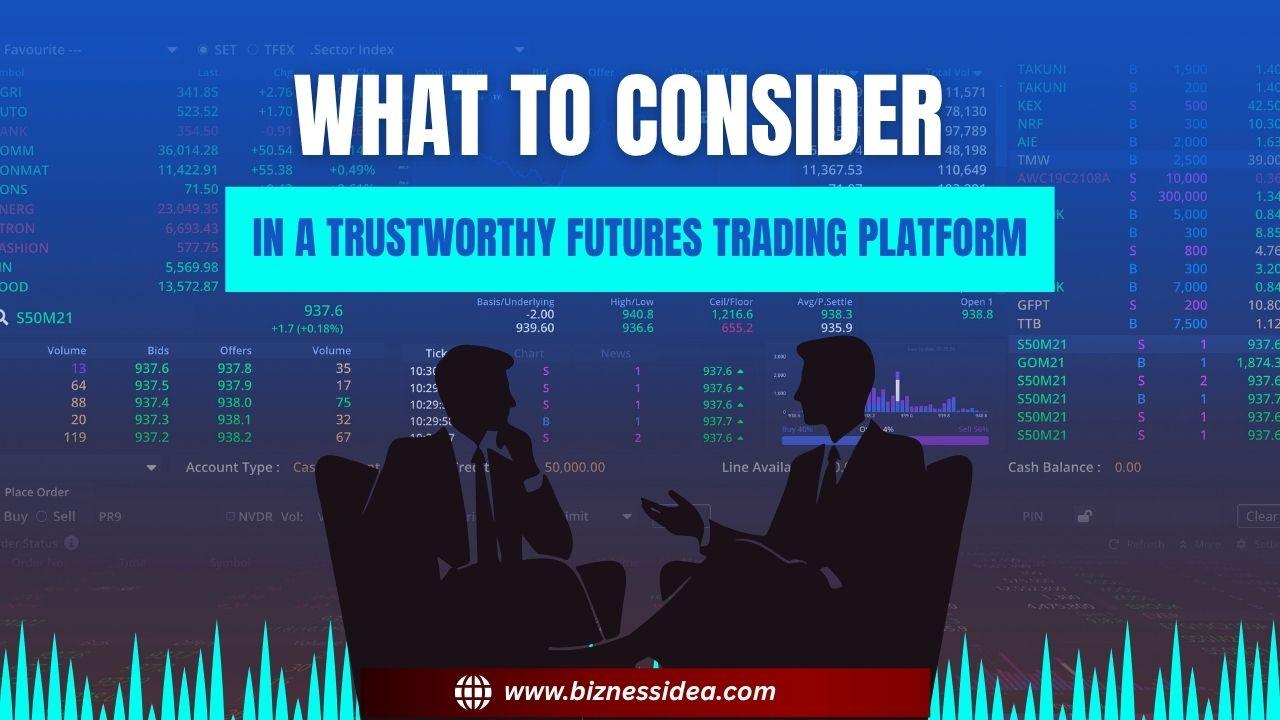Trading S&P futures has become one of the most popular ways to gain exposure to the U.S. equity markets, offering liquidity, volatility, and around-the-clock access. For traders seeking to maximise these opportunities, selecting the right futures trading platform is a crucial decision. A reliable platform can make all the difference between missed trades and confident execution.
Here, we’ll cover the key features that result in a solid, effective automated futures trading platform for S&P futures—so whether you’re day trading, swing trading, or taking long positions, you can trade with confidence and control.
The Need for Futures Trading Platform Stability and Speed
One of the first and most essential features any S&P futures trader should prioritise is platform stability. The S&P 500 futures market is a fast-moving environment, especially during economic data releases or corporate earnings seasons. A one-second platform freeze or delay in order execution can result in slippage, missed opportunities, or even unnecessary losses.
A trustworthy platform for trading must offer high uptime and rapid order execution, even during volatile conditions. This is especially vital during the U.S. market open or when the Federal Reserve makes announcements, as price action is at its peak. Real-time responsiveness ensures that your trades are filled at the intended price, not delayed due to server lag or congestion.
Futures Trading Platform Have Access to Real-Time Data and Market Depth
When trading S&P futures, having access to real-time data is not optional—it’s essential. Your best platform for futures trading should provide live, uninterrupted price feeds that reflect accurate, up-to-the-moment market conditions. Delays or inaccurate quotes can distort your perception of market momentum and lead to poor trade execution.
Equally important is access to market depth. This feature shows the number of buy and sell orders at various price levels, giving you valuable insight into liquidity and order flow. Whether you’re scalping or trading breakouts, understanding where significant interest lies in the order book can improve your timing and strategy.
Futures Trading Platform Have Charting Tools and Technical Indicators
For most S&P futures traders, technical analysis forms the basis of trade decisions. This makes charting capabilities a core component of any effective trading platform. A reliable and best mobile futures trading platform should provide dynamic, customizable charts with multiple timeframes—from one-minute intervals to daily and weekly views.
The platform should also support a wide range of technical indicators such as moving averages, RSI, MACD, Bollinger Bands, and volume-based tools. The ability to draw trendlines, annotate charts, and compare assets side-by-side enhances decision-making and allows traders to interpret market signals clearly. Without strong charting tools, traders operate in the dark.
Order Management and Execution Features
Order handling plays a vital role in trade efficiency and risk management. A dependable and free futures trading platform must support various order types, including market, limit, stop-loss, trailing stop, and conditional orders. In a fast-paced market like S&P futures, the ability to execute trades precisely and promptly is crucial.
Advanced order types such as bracket orders and OCO (One-Cancels-the-Other) can help automate both profit-taking and risk limitation. These features allow traders to manage their trades even when they’re not actively monitoring the screen, making the platform adaptable to a range of trading styles.
Ease of Use and Customizability
Simplicity and a smooth user experience are often overlooked but highly important. A complex interface with hidden or hard-to-reach functions can cost valuable seconds in a live trading environment. The platform should simplify your workflow, not complicate it.
The ability to customise dashboards, arrange watchlists, save chart templates, and personalise layouts is highly beneficial. If the interface feels intuitive and responds well to your trading needs, it reduces cognitive load and allows you to stay focused and efficient during market hours.
Risk Management and Account Monitoring Support
Effective risk management is the foundation of successful trading. The platform should provide real-time updates on profit and loss, margin usage, account balances, and open positions. Having immediate access to this information is vital when trading leveraged products like S&P futures.
Notification systems are equally important. Traders should be able to set alerts for price levels, technical signals, or changes in account value. These alerts can help you stay in control, even if you’re away from your workstation. Proper risk tools empower traders to act decisively and defensively in volatile situations.
Compatibility with Automation and Strategy Testing
As trading becomes more advanced, many futures traders incorporate automation and algorithmic strategies. A modern trading platform should support automation through built-in scripting languages or third-party integrations. It should also include backtesting capabilities, allowing traders to test strategies against historical data before risking real capital.
Even if you’re not currently using automated strategies, having the option to evolve your trading with these features offers long-term flexibility. Automation is especially valuable in the S&P futures market, where price movements can be swift and precise timing is critical.
Security and Support
Trust is non-negotiable when choosing a trading platform. You’re entrusting your capital, sensitive data, and trade execution to this system. Therefore, the platform must incorporate advanced security measures, such as two-factor authentication, data encryption, and secure account access protocols.
In addition, robust customer support is vital. Technical issues can happen at any time. Immediate access to live chat, phone, or email support during trading hours is a key sign of a platform that prioritises trader success and reliability.
Conclusion
Selecting a trustworthy platform for trading S&P futures is about more than aesthetics or a long list of features. It’s about choosing a tool that emphasises speed, precision, security, and usability, all while giving you the analytics and control you need to succeed.
Because S&P futures offer 24-hour access and high liquidity, the trading platform you use must be capable of handling the demands of modern, real-time trading. Whether you’re managing multiple positions, swing trading, or scalping intraday movements, your trading performance depends heavily on the quality of your platform.
Choose wisely—and you’ll gain more than a place to trade. You’ll gain a reliable partner in the fast-paced world of futures trading.
FAQs
Que 1. What makes a futures trading platform trustworthy for S&P 500 futures?
Ans. A trustworthy platform should be regulated by a reputable authority (like CFTC, NFA, or FCA), offer transparent fee structures, secure fund protection, and deliver fast, reliable trade execution. Look for platforms that have positive reviews, strong customer support, and integration with reliable clearing firms.
Que 2. Why is execution speed so important for trading S&P 500 futures?
Ans. Because S&P futures are highly volatile and liquid, fast execution ensures you enter and exit trades at the expected price. Delays can lead to slippage, missed opportunities, or larger-than-expected losses, especially during high-impact news events.
Que 3. What tools should a good platform offer for S&P 500 futures trading?
Ans. A quality platform should provide:
- Real-time price data
- Advanced charting tools
- Technical indicators
- Order flow analysis
- Customisable alerts
These tools help you make more informed decisions in a fast-moving market.
Que 4. Are lower fees always better in futures trading platforms?
Ans. Not always. While low fees are important—especially for active traders—it’s critical to balance cost with platform quality, data accuracy, execution speed, and risk management tools. A slightly higher fee might be worth it if the platform offers significantly better reliability and performance.
Que 5. Can I trade S&P 500 futures on a mobile app?
Ans. Yes. Many modern platforms, such as MetaTrader 5, TradingView, and NinjaTrader, offer fully functional mobile apps. These apps enable traders to monitor markets, execute trades, and manage positions on the go, making them ideal for staying active outside of a traditional desk setup.













